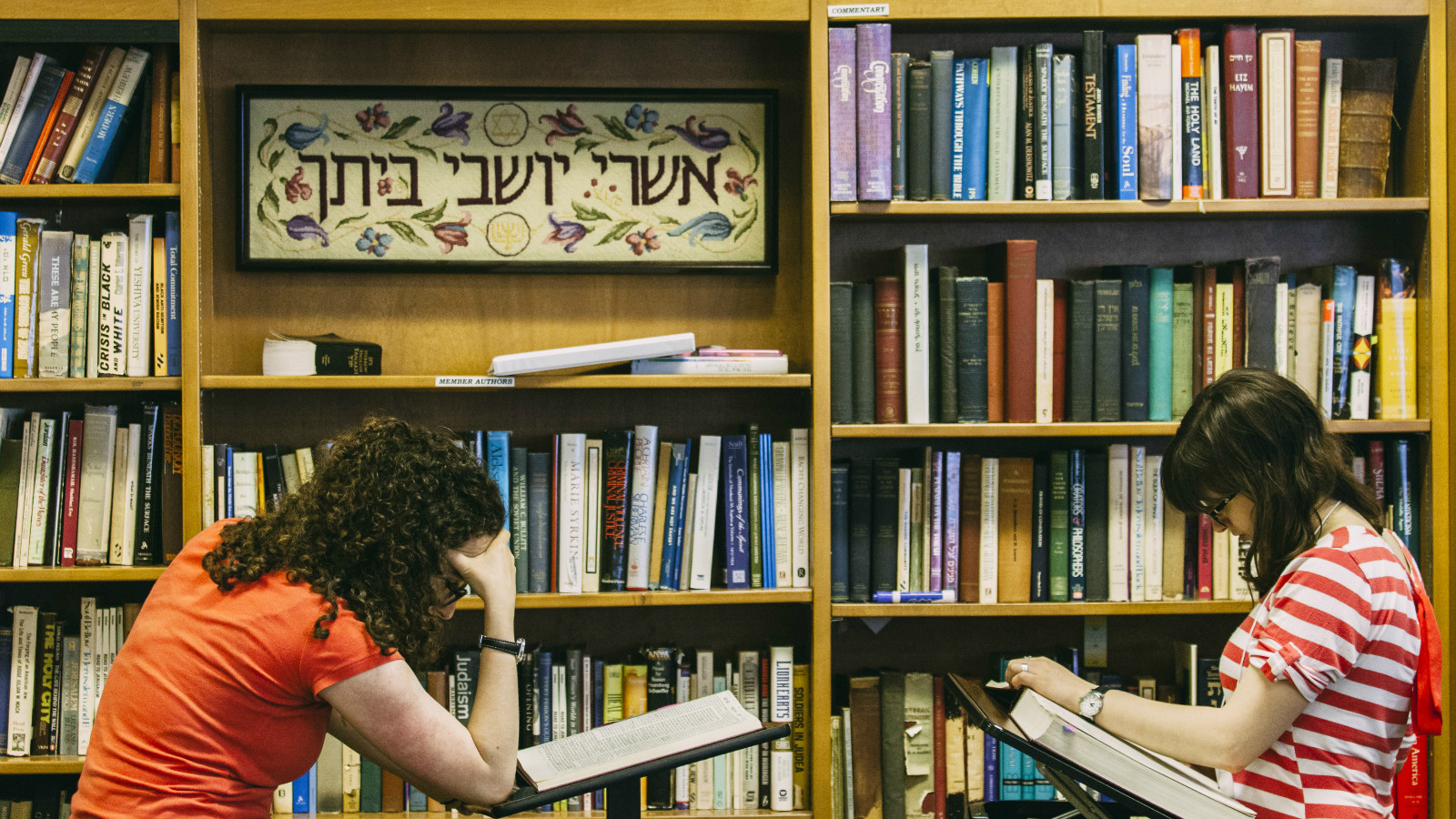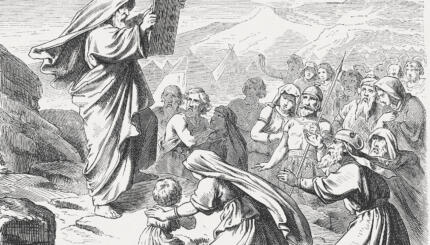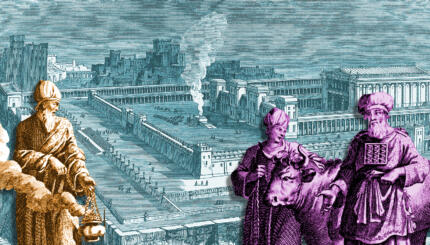In the centuries following the redaction of the Babylonian , Jewish legal scholarship was primarily recorded in the form of commentaries and responsa, which attempted to explain and apply talmudic law. Yet the early medieval period also witnessed the emergence and development of the legal code, an innovative genre of writing that came unto its own with the publication of Moses Maimonides‘ Mishneh Torah in 1180.
Alfasi’s Work
Sefer Ha-Halachot (Book of the Laws) by Rabbi Isaac Alfasi was the most significant halachic work produced in the period prior to Maimonides. Isaac ben Jacob Ha-Kohen of Fez (1013–1103), best known by his acronym “Rif,” was regarded as a successor to the geonim, and his legal erudition was renowned in his native North Africa and his adopted Spain.
Within decades of its publication, Alfasi’s masterpiece of talmudic law became the cornerstone of study in Spanish yeshivot, and it wielded extraordinary influence on authorities of subsequent generations. Nonetheless, the northern European communities of Ashkenaz were slow to embrace the new legal genre and persisted in alternative forms of halachic scholarship.
Like the halachic works of the early geonim, Alfasi’s digest is comprehensive in scope and follows the talmudic scheme. It corresponds to three of the six orders of the Talmud: Moed (holiday ritual), Nashim (family law), and Nezikin (property law and damages); and to two additional tractates from other orders, Berakhot (laws of prayer) and Hullin (dietary law).

Help us keep Jewish knowledge accessible to millions of people around the world.
Your donation to My Jewish Learning fuels endless journeys of Jewish discovery. With your help, My Jewish Learning can continue to provide nonstop opportunities for learning, connection and growth.
Practical in orientation, Sefer Ha-Halachot omits those sections of the Talmud that are focused on Temple worship or the Land of Israel. Alfasi’s magnum opus is not actually a legal code in the classic sense, with thematic divisions and sub-divisions, but it was designed to serve as a compendium of applicable law, and as such, it paved the way for later styles of codification.
Alfasi’s goal was to distill the halakhic essence of talmudic debates and deliberations and to determine the law in accordance with the interpretations and rulings of the geonim. Yet he retained a fair amount of talmudic material in his composition, citing even some halakhic discussions and narrative passages that do not have direct bearing on the law and earning his composition the appellation “Talmud Katan” (Little Talmud).
Sefer Ha-Halachot was widely perceived as an abbreviated Talmud, in addition to a halachic textbook, and it actually supplanted traditional Talmud study in the curriculum of Spanish academies through the thirteenth and even fourteenth centuries.
As a testament to the monumentality of Alfasi’s work, Moses Maimonides called him “the great master, Rabbenu Isaac” and Joseph Caro, author of the Shulchan Aruch, referred to him as one of the “three pillars of instruction upon which the House of Israel rests.” Indeed, Alfasi’s Sefer Ha-Halachot was one of the primary sources for Caro’s own code, which remains the authoritative halachic compendium to this day.
Secondary Literature
Within a century, Alfasi’s work generated its own body of secondary literature that explained, expanded, attacked, and defended the master’s readings and rulings. Several of these supplements were intended to allow Sefer Ha-Halachot to serve as a reliable substitute for the Talmud but also constituted significant halakhic works in their own right.
Important contributions include Sefer Ha-Maor (Book of the Luminary) by Zerahiah Ha-Levi Gerondi (“Rezah”), Hassagot (Glosses) by Abraham ben David of Posquières (“Rabad”), Milhamot Ha-Shem (Wars of the Lord) by Moses ben Nahman (“Ramban”), and critical notes by Nissim Gerondi (“Ran”).
Commentaries and responses to Alfasi were written primarily in Spain and Provence, where a number of additional codes in the style of the geonic works and Sefer Ha-Halachot were drafted as well. Among the compendiums inspired by Alfasi are Halachot Kelulot (Comprehensive Laws) by Isaac ibn Ghayyat (“Rizag”) and Sefer Ha-Ittim (Book of the Seasons) by Judah al-Bargeloni.
Early Medieval Ashkenaz
Despite the popularity of legal codification in Babylonia and Spain, this genre of scholarship was not widely adopted in northern Europe. Ashkenazic authorities were familiar with Alfasi’s work and held him in the highest regard, but they were engaged in other forms of halachic writing, primarily commentaries and novellae to the Talmud.
In the field of exegesis, German and French scholars were the pioneers, developing systematic commentary, in the style of Rabbi Gershom ben Judah Me’or Ha-Golah (Light of the Exile) and Rabbi Solomon ben Isaac (“Rashi”), as well as the highly innovative Tosafot commentary of later scholars. These commentaries focused on explicating the Talmud, rather than recording practical halakhah, but like the Talmud itself, they often preserved important legal rulings.
Responsa
As in Spain and Provence, German and French scholars devoted much of their legal activity to the writing of responsa. Practical questions on a range of matters in civil and ritual law were submitted to the authorities of each generation by individuals and communities throughout the Diaspora. The receptiveness of legal authorities to these queries became particularly crucial as Jewish settlement spread and local scholars were not always available or capable of rendering legal decisions.
The responses generated established the basis of halakhic observance and set precedent for future generations. Collected correspondence formed an independent body of legal literature that constituted a critical source for all subsequent halakhic rulings and was regularly consulted by local decisors as well as the authors of digests and codes.
Other Legal Works
With the exception of several books of minhagim (religious customs) and a number of short legal monographs, the early scholars of Germany and France did not produce practical halakhic compendia. Yet in the twelfth century, several works of lasting impact did emerge from the school of Rabbi Solomon ben Isaac (hereafter “Rashi“).
Although Rashi himself did not engage in the writing of legal codes, important halakhic monographs were authored by his students, among them Sefer Ha-Orah (Book of the Way), Sefer Ha-Pardes (Book of the Orchard), Siddur Rashi (Prayer-book of Rashi), and Mahzor Vitri (Holiday Liturgy of Vitri). Another significant legal work, called Even Ha-Ezer, was written by the tosafist Eliezer ben Nathan of Mainz (c. 1090–1170).
Although the codes of Alfasi and his successors did not ultimately succeed in replacing the Talmud, which has remained the foundation of Jewish law for two millennia, this form of halachic writing has been adopted and refined by the greatest scholars over the centuries and has itself become a classic and enduring mode of legal expression.
halacha
Pronounced: hah-lah-KHAH or huh-LUKH-uh, Origin: Hebrew, Jewish law.



